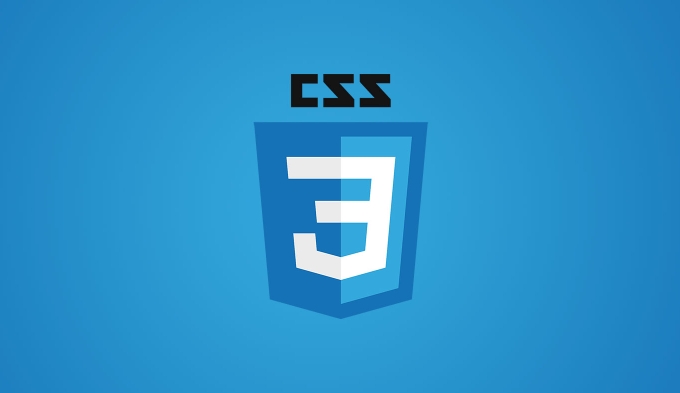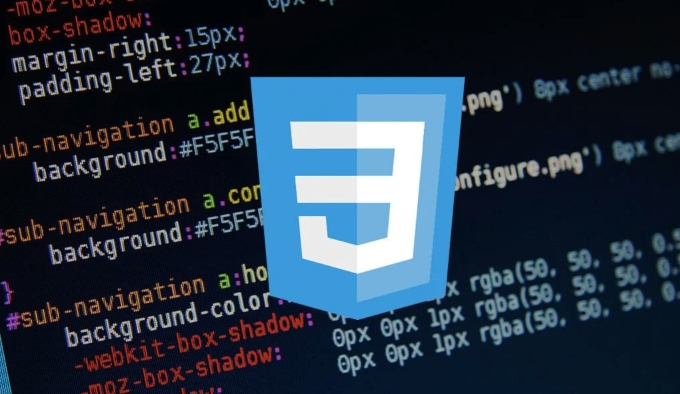A practical CSS tutorial on the :has() parent selector
Jul 05, 2025 am 12:46 AMCSS can now use the :has() pseudo-class to reverse select the parent element according to the child element. 1. The syntax is parent:has(child), such as div:has(img) to add borders to divs containing pictures; 2. Support chain conditions such as section:has(h1, .highlight); 3. Common uses include adjusting layout according to videos, sidebar components, etc.; 4. Currently supports Chrome 105, Safari 15.4, and Edge 106, and Firefox does not currently support it, and it is necessary to provide a backup solution; 5. It is recommended to keep the conditions concise to avoid performance problems when using it.

Yes, CSS can finally target parent elements based on their children — and it's all thanks to the :has() pseudo-class. This selector lets you style a parent element if it contains a specific child or match a certain condition. It's a game-changer because for years, we've only been able to go from parent to child, never the other way around.

Now that major browsers like Chrome and Safari support :has() , it's time to see how it works in real use cases.

How to Use :has() to Style Parent Elements
The basic syntax looks like this:
parent:has(child) {
/* styles here */
} For example, if you want to add a border to a <div> that contains an <img src="/static/imghw/default1.png" data-src="https://img.php.cn/upload/article/000/000/000/175164761778650.jpeg" class="lazy" alt="A practical CSS tutorial on the :has() parent selector" > , you'd write:

div:has(img) {
border: 2px solid #333;
} This means any div with an image inside will get that border. You're not styling the image — you're styling its container, which was tricky before without JavaScript.
You can also chain multiple selectors inside :has() :
section:has(h1, .highlight) {
background-color: #f0f0f0;
} This section gets a light gray background if it has either an h1 or an element with the class .highlight .
Common Use Cases for :has() in Real Projects
Here are some situations where :has() really shines:
Styling article containers differently when they include videos
.article:has(video) { padding: 0; }Adjusting layout if a sidebar contains a specific widget
.sidebar:has(.newsletter-signup) { background-color: #fff8e7; }Adding icons next to links that open in new tabs
You can target anchor tags with a[target="_blank"]attribute:a[target="_blank"]:has(svg) { padding-right: 10px; }
These examples show how :has() helps reduce extra classes or JavaScript just to apply conditional styling based on content.
Browser Support and Fallbacks
Right now, :has() works in:
- Chrome 105
- Safari 15.4
- Edge 106
But it's not yet supported in Firefox (as of early 2025), so you need to plan accordingly.
If you're building a production site, consider these options:
Use
:has()but provide a fallback style that doesn't rely on itDetect browser support with
@supports:@supports selector(:has(*)) { /* styles using :has() */ }For unsupported browsers, fall back to adding a class via JavaScript:
document.querySelectorAll('div').forEach(div => { if (div.querySelector('img')) { div.classList.add('has-img'); } });
Keep in mind that even though :has() is powerful, it's still some experimental. So test carefully across browsers.
Final Notes on Using :has() Effectively
It might be tempting to overuse :has() , especially since it opens up new possibilities. But keep your selectors simple and avoid deeply nested conditions. For example:
.container:has(.active):has(.highlight):has(ul)
That's valid, but hard to read and debug.
Stick to one or two conditions at most. Also, remember that :has() can slow things down a bit because the browser has to look inside elements to check for matches.
So while it's exciting and useful, treat it like any performance-sensitive feature — use it wisely.
Basically that's it.
The above is the detailed content of A practical CSS tutorial on the :has() parent selector. For more information, please follow other related articles on the PHP Chinese website!

Hot AI Tools

Undress AI Tool
Undress images for free

Undresser.AI Undress
AI-powered app for creating realistic nude photos

AI Clothes Remover
Online AI tool for removing clothes from photos.

Clothoff.io
AI clothes remover

Video Face Swap
Swap faces in any video effortlessly with our completely free AI face swap tool!

Hot Article

Hot Tools

Notepad++7.3.1
Easy-to-use and free code editor

SublimeText3 Chinese version
Chinese version, very easy to use

Zend Studio 13.0.1
Powerful PHP integrated development environment

Dreamweaver CS6
Visual web development tools

SublimeText3 Mac version
God-level code editing software (SublimeText3)

Hot Topics
 How can I include CSS only on some pages?
Jun 11, 2025 am 12:01 AM
How can I include CSS only on some pages?
Jun 11, 2025 am 12:01 AM
There are three ways to selectively include CSS on a specific page: 1. Inline CSS, suitable for pages that are not frequently accessed or require unique styles; 2. Load external CSS files using JavaScript conditions, suitable for situations where flexibility is required; 3. Containment on the server side, suitable for scenarios using server-side languages. This approach can optimize website performance and maintainability, but requires balance of modularity and performance.
 Flexbox vs Grid: Understanding the Key Differences in CSS Layout
Jun 10, 2025 am 12:03 AM
Flexbox vs Grid: Understanding the Key Differences in CSS Layout
Jun 10, 2025 am 12:03 AM
Flexboxisidealforone-dimensionallayouts,whileGridsuitstwo-dimensional,complexlayouts.UseFlexboxforaligningitemsinasingleaxisandGridforprecisecontroloverrowsandcolumnsinintricatedesigns.
 Creating an Auto-Closing Notification With an HTML Popover
Jun 10, 2025 am 09:45 AM
Creating an Auto-Closing Notification With an HTML Popover
Jun 10, 2025 am 09:45 AM
The HTML popover attribute transforms elements into top-layer elements that can be opened and closed with a button or JavaScript. Popovers can be dismissed a number of ways, but there is no option to auto-close them. Preethi has a technique you can u
 What is 'render-blocking CSS'?
Jun 24, 2025 am 12:42 AM
What is 'render-blocking CSS'?
Jun 24, 2025 am 12:42 AM
CSS blocks page rendering because browsers view inline and external CSS as key resources by default, especially with imported stylesheets, header large amounts of inline CSS, and unoptimized media query styles. 1. Extract critical CSS and embed it into HTML; 2. Delay loading non-critical CSS through JavaScript; 3. Use media attributes to optimize loading such as print styles; 4. Compress and merge CSS to reduce requests. It is recommended to use tools to extract key CSS, combine rel="preload" asynchronous loading, and use media delayed loading reasonably to avoid excessive splitting and complex script control.
 How to use Lotties in Figma
Jun 14, 2025 am 10:17 AM
How to use Lotties in Figma
Jun 14, 2025 am 10:17 AM
In the following tutorial, I will show you how to create Lottie animations in Figma. We'll use two colorful designs to exmplify how you can animate in Figma, and then I'll show you how to go from Figma to Lottie animations. All you need is a free Fig
 Breaking Boundaries: Building a Tangram Puzzle With (S)CSS
Jun 13, 2025 am 11:33 AM
Breaking Boundaries: Building a Tangram Puzzle With (S)CSS
Jun 13, 2025 am 11:33 AM
We put it to the test and it turns out Sass can replace JavaScript, at least when it comes to low-level logic and puzzle behavior. With nothing but maps, mixins, functions, and a whole lot of math, we managed to bring our Tangram puzzle to life, no J
 External vs. Internal CSS: What's the Best Approach?
Jun 20, 2025 am 12:45 AM
External vs. Internal CSS: What's the Best Approach?
Jun 20, 2025 am 12:45 AM
ThebestapproachforCSSdependsontheproject'sspecificneeds.Forlargerprojects,externalCSSisbetterduetomaintainabilityandreusability;forsmallerprojectsorsingle-pageapplications,internalCSSmightbemoresuitable.It'scrucialtobalanceprojectsize,performanceneed
 Does my CSS must be on lower case?
Jun 19, 2025 am 12:29 AM
Does my CSS must be on lower case?
Jun 19, 2025 am 12:29 AM
No,CSSdoesnothavetobeinlowercase.However,usinglowercaseisrecommendedfor:1)Consistencyandreadability,2)Avoidingerrorsinrelatedtechnologies,3)Potentialperformancebenefits,and4)Improvedcollaborationwithinteams.






